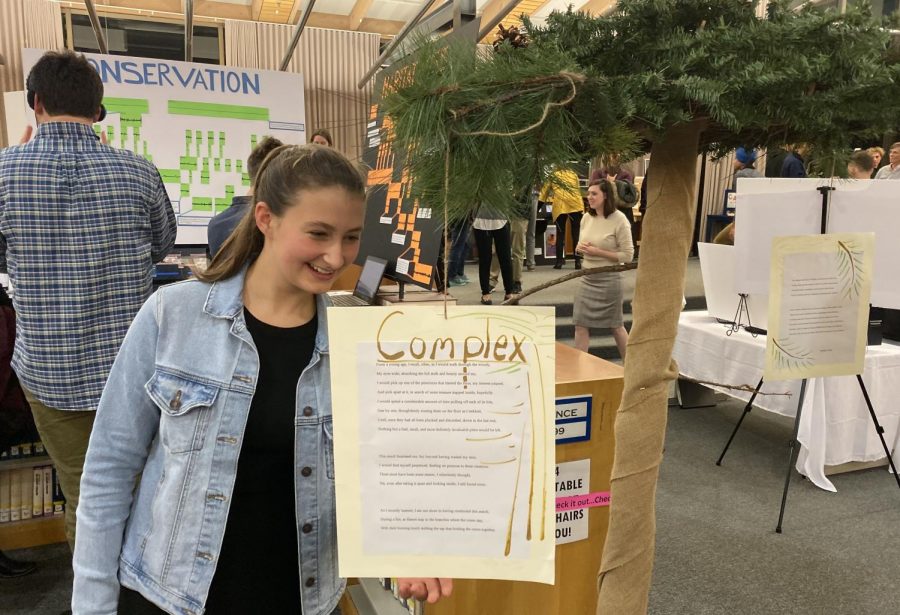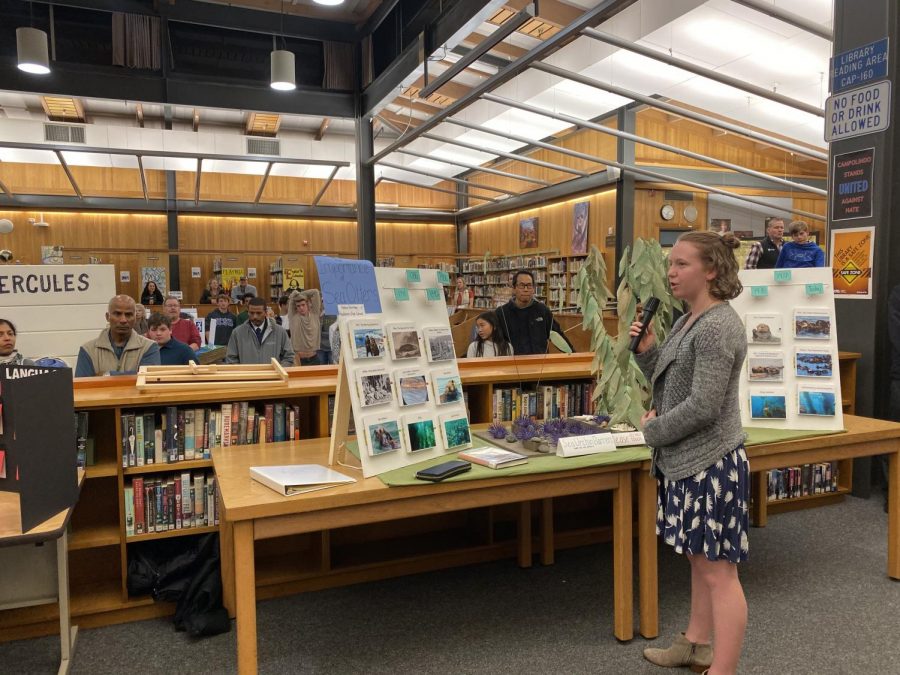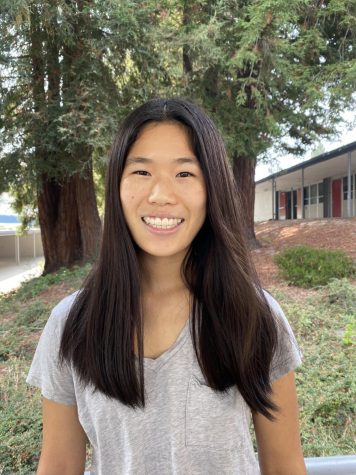AGATE Program Holds Projects to High Standard
December 11, 2019
Despite creating elaborate, time-intensive projects, approximately 1/3 of the participants in the Acalanes Gifted and Talented Education (AGATE) fall semester program discovered they did not pass the course requirements when they went to collect their projects, which were on display in the Campolindo library from December 3 through 5.
AGATE, a selective district-wide program for juniors, provides students with the opportunity to create an interdisciplinary research project based on a series of seminars and a field trip. It is structured as a pass/fail course, and students who successfully complete the program receive 5 elective credits on their transcripts. According to AGATE adviser Paul Verbanszky, about 1/3 of the participants did not pass on their 1st try this year.
“AGATE is 2-fold. It’s the actual project, the display itself, and then there’s the binder, which involves the research, the Works Cited, the journal entries, and things like that. Many students did not [have all of that] – they would have a lot of research on 1 discipline and then no research on the other, so that kind of stuff [might prevent them from passing],” Verbanszky said.
Attention to detail is just 1 of the many expectations evaluators have for the students who enter the program. “I think [the fails were from] just a lack of paying attention specifically,” said junior Jack Pawlakos. “People probably just didn’t pay attention as much to a certain thing. There’s a certain amount of research that you have to have, and sometimes people might just not have enough research.”
While a 1/3 fail rate may sound surprising, it should be noted that students do have the opportunity to fix any problems with their projects, according to Verbanszky, “so it’s not like, ‘That’s it.'”
Although junior Sahaana Rajesh admitted that the pass/fail system “isn’t very lenient,” she liked it because it gave her more freedom. “Letter grades should be left to our classes because it is a more exact measurement. For the AGATE project, the sole focus isn’t getting a good grade so that relieves the stress of only shooting for an A. With the pass/fail system, you just have to complete the requirements and the rest is up to you,” she said.
Earlier this semester, student participants and teacher advisers traveled to Monterey, where they visited historic buildings and toured natural reserves, which inspired the subsequent projects. According to Verbanszky, this year’s program was a “great success.”
“The students from all 4 schools were dynamic; they were engaged; they were creative; they were curious. It was a lot of fun for us. The weather was beautiful in Monterey, and the projects were top-notch, many of them,” Verbanszky said. “We had some projects that were beyond what we’d ever seen before in terms of the research that went in. ”
Junior Ainsley Woodford said AGATE was “a really fun experience” and appreciated that it gave her the opportunity to showcase her interests and creativity in an academic setting.
Woodford, who combined the disciplines of fashion design and environmental science, said, “When you take regular classes at school, you don’t get to get to express yourself, but I got to choose something that I wanted to do, rather than a teacher telling me what to do.” For her project, she designed and sewed a skirt based on the fashion of the 1950s and tied that in with the environmental science she learned about while in Monterey.
Pawlakos combined music and English for his project; he composed songs with his guitar and harmonica based on the writing of John Steinbeck, an author from the area. “[Steinbeck], in his literature, emphasized how different groups of people were oppressed, like immigrants. That theme inspired a lot of music, and then that inspired me to look more into that and then create that type of music,” said Pawlakos.
The students’ efforts culminated in a reception, which was held on December 3. “A lot of people showed up [for the reception], and it was kind of cool to be able to explain my project to people’s parents, because some of them actually seemed like they were interested in it and weren’t just coming over to be polite,” said Pawlakos.
“I felt that the audience really enjoyed looking at the work that the [students] created. [There were] positive responses; a lot of parents and community members were happy about what they saw, and a lot of students felt pretty good about it as well,” Verbanszky said.
Both Pawlakos and Woodford appreciated seeing their peers’ projects at the reception.
“Everyone put in a ton of effort, and it really showed. Throughout the program, we heard everyone’s ideas and what they were planning to do, and it was really cool to see it come to life. Everyone did a really good job on theirs,” said Pawlakos.
Woodford agreed. “It was just a good way to end the whole program. I would say that it brought everyone together in a way that made us closer because we bonded on the trip, but also being together and seeing everyone’s projects kind of brought it full circle,” she said.
Rajesh recommends participating in AGATE. “I loved AGATE. It was an amazing experience and I got to meet some great people from across the school district. The hotel was also so amazing. The dining hall and social hall were blessed,” she said. “I think anyone who gets nominated should just put themselves out there for the program.”


